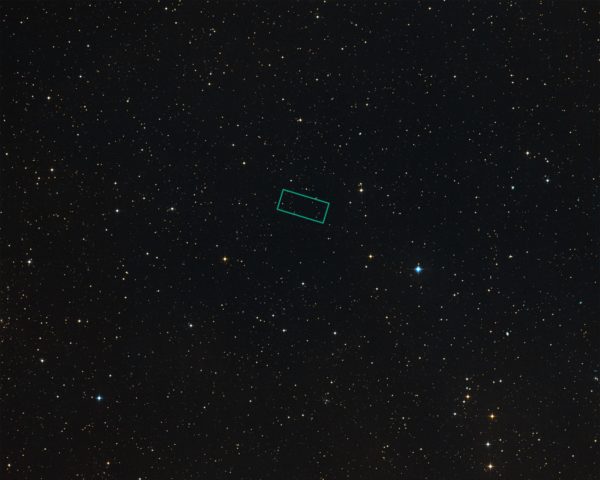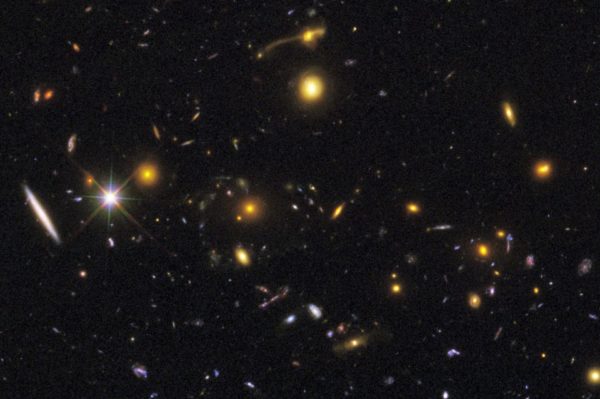“Deep into that darkness peering, long I stood there, wondering, fearing, doubting, dreaming dreams no mortal ever dared to dream before.” -Edgar Allan Poe
No matter where you look in the night sky, a powerful enough telescope appears to reveal points of light. Even if you find a region with no stars in the Milky Way, you’re likely to find thousands of galaxies in the deep sky beyond, as the Hubble Deep Field and successor images demonstrated. However, it wasn’t until 2010 and the WFC3 that we were able to get deep, wide-field views simultaneously.
 A ground-based view of the region of sky containing the GOODS-S ERS field, from the Digitized Sky Survey. Image credit: Digitized Sky Survey (DSS), STScI/AURA, Palomar/Caltech, and UKSTU/AAO.
A ground-based view of the region of sky containing the GOODS-S ERS field, from the Digitized Sky Survey. Image credit: Digitized Sky Survey (DSS), STScI/AURA, Palomar/Caltech, and UKSTU/AAO.
The first mosaic from that program -- the GOODS-S ERS -- revealed over 7,500 galaxies in a very narrow region of space, less than 10 arcminutes across on the sky. Galaxies appear in all shapes, sizes and colors, revealing a simultaneous view of nearby ones and distant ones from when the Universe was only 5% its current age.
 Cosmic rarities, like merging galaxies (top) and gravitational lensing phenomena (middle) can be seen at various points in the image. Image credit: NASA, ESA, R. Windhorst, S. Cohen, M. Mechtley, and M. Rutkowski (Arizona State University, Tempe), R. O'Connell (University of Virginia), P. McCarthy (Carnegie Observatories), N. Hathi (University of California, Riverside), R. Ryan (University of California, Davis), H. Yan (Ohio State University), and A. Koekemoer (Space Telescope Science Institute).
Cosmic rarities, like merging galaxies (top) and gravitational lensing phenomena (middle) can be seen at various points in the image. Image credit: NASA, ESA, R. Windhorst, S. Cohen, M. Mechtley, and M. Rutkowski (Arizona State University, Tempe), R. O'Connell (University of Virginia), P. McCarthy (Carnegie Observatories), N. Hathi (University of California, Riverside), R. Ryan (University of California, Davis), H. Yan (Ohio State University), and A. Koekemoer (Space Telescope Science Institute).
- Log in to post comments
